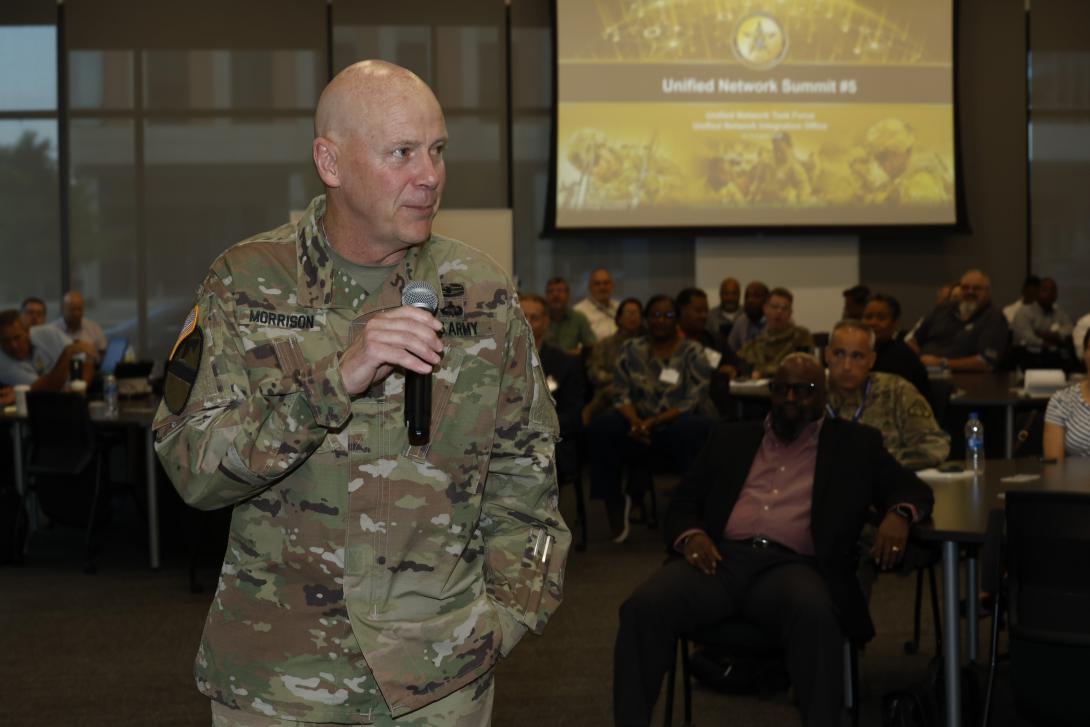The Expected Transformation of Signaleers
With a unified network, the role of the soldiers in the Army’s Signal Corps will shift from a mission support position to becoming embedded in operations. While Signaleers always will provide the core service of communications to enable a commander, these soldiers also will be supporting maneuver and maneuvering themselves, “and that is a different mindset we need to have,” said Lt. Gen. John Morrison, G-6 and deputy chief of staff, U.S. Army, speaking August 18 during the closing session of AFCEA International’s TechNet Augusta conference in Georgia.
“If you don’t think of yourself as an operator, you are in the wrong business,” the general said. “In the cyberspace domain, it is all about combined arms maneuver. The cyber force has a role to play, and the Signal regiment has a role to play. The EW [electronic warfare] force that is part of our cyber branch has a role to play. With our intel partners underpinning it all.”
Part of the transformation is prompted by the Army evolving to answer the needs in the Indo-Pacific, which will bring about small nodes or groups of soldiers deploying in a dispersed manner. The other inducement is the Signaleers’ platform itself. The service’s endeavor over the last year to plan and create a unified network—a combined platform for communications, computing, fires, cyber and intelligence—means that communications soldiers will take on new roles.
That reality of a unified network is one “big step closer,” Gen. Morrison noted. “In a short year it is absolutely phenomenal the work that has gone on across the broader community, whether it is our cyber or our great teammates at the CIO’s [chief information officer’s] office, the enterprise cloud management activity, the Network CFT [cross functional teams] and all the PEOs [program executive officers] that are supporting it. We have gotten ourselves aligned to where we don’t talk enterprise and tactical. We all know that is a four-letter phrase. We talk about strategic and operational and the linkages to the tactical domain and bring that all together in a unified fashion so that we can modernize smartly and drive on this notion of unified network.”
The use of a unified network will be amplified by cloud storage, computing and digital capabilities through a hybrid approach of on- and off-premise cloud platforms, the general explained. “We have set the foundation from a cloud perspective to where we now have an environment where we will be able to rapidly and smartly start moving towards the cloud,” he stressed. “And I will tell you it’s not ‘the cloud.’ We have a very strong path forward on a hybrid cloud approach because we have learned through exercises and operations that is the approach we needed to take.”

The general admitted that it helps to have the support of "big Army," with top leaders recognizing the need for one distinct platform. “You are watching programs change and you are watching mindsets change,” Gen. Morrison stated. “Front and center as an objective is this notion of a unified network.”
The service will spend the next few months finalizing requirements for such a network, which ultimately will become a program of record. With a combined digital platform, Army Cyber Command will run unified network operations to maintain, secure and defend the Army’s portion of the Department of Defense Information Network, or the DODIN, he shared.
The general shared a vision of the data-centric platform that would offer common Army capabilities across echelon, allowing soldiers—and Signaleers—deploying across the globe, distributively, to plug in and out of the network effectively. “Whether it is supporting exercises in the U.S. Indo-Pacific Command or operations in Europe, we are seeing the power of this unified network,” Gen. Morrison said.
He told industry to look at the next six months as priority of effort in which the Army aligns itself to build and incrementally improve a unified network. “Engaging with our industry partners is absolutely critical to everything that is going on in our Army,” he said.





Comments